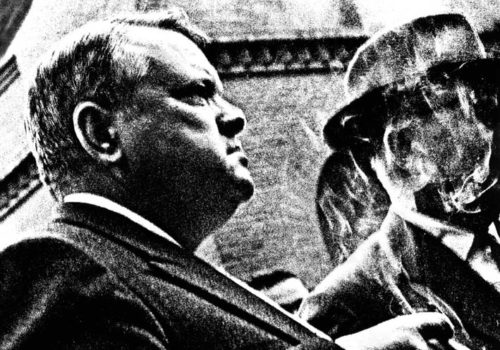Life, in all its intensity
On the first day of class, a friend of mine who used to teach photography would show his students a picture of a cat and would ask them: “What is this?” Everyone’s rather surprised answer was, “A cat!” And he would always respond: “No. It’s the picture of a cat.”
Ronald’s photographs are, first and foremost, photographs. They are pictures of light falling unto things and somehow discovering (and covering) them: direct, strong, bold, more shadow than light. The subjects come later.
They are all a self-portrait, a portrait of intensity as a photographic theme. Once again, it’s all Ronald: that is how he talks. That is his language. Those are his signs. Frontal, straightforward, no beating about the bush. Why should his photographs be any different?
Where does he come from? He is not part of the illustrious tradition of photography itself. Avedon? He admires him, but he does not imitate him. Cartier Bresson? The way of facing his subject is the same, but the way of visualizing him is not. Robert Capa? The flow of moments, the raw intensity of his blurry pictures of the Normandy invasion?… Maybe Ronald’s images come from movies: Bergman? (Another lover of photography). Or is it Orson Welles himself, with his low camera angles and contrasting hues?
Determined to do things right (as always), Ronald bought a Hasselblad. It was the time when we loved the quality of grays and blacks. The only affordable photo lab that was capable of doing a good job at the time, by developing rolls of film with a fine-grain developer, was “Ellinger,” located at the corner of Viamonte and Maipu, where some patient Germans worked wonders with 35mm film. Their 6×6 format was mouth-watering: monumental. The Hasselblad was the passport to professional photography. Especially when it was taken to the moon in 1969. I bet a lot of Hasselblads were sold around that time. But not many Ronald Shakespears came out of it. Ronald, however, took a number of his photographs with a historical Leica F3 –the favorite camera of spies– with a retractile lens that enabled you to carry it around in your jacket pocket.
We also have to think about the personalities he chose for his pictures; the photos are powerful, but so are the personalities. The Sixties were a heroic time. I don’t know what it was about the air… maybe our youth? But no, there was something else, something that pushed people in the Western world to break barriers, to speak up, to live their own lives. It was a bit like the 20’s, and not like the 30’s, or the 40’s or the 50’s. The Sixties were all about pushing boundaries. In that explosive context of Pop Art, San Francisco hippies, Mary Quant’s fashions, Carnaby Street, “La Menesunda”, and Instituto Di Tella, Ronald walked out with his camera, ready to capture a fleeting moment. His models do not pose; they walk by. They do not even seem to notice the photographer, who is there, with his Caravaggian eye, waiting for that magical instant when light, shadow and subject come together to create the perfect image.
This is what we now have the privilege to see again, thanks to this new edition by “Caras y Caritas”: life, in all its intensity.
Jorge Frascara / Icograda Past President. Padova 2011
Ronald Shakespear: Caras y Caritas, 50 years later
From April 5th to May 24th, 2013
The Buenos Aires Museum of Modern Art
San Juan 350
Buenos Aires
Argentina
















